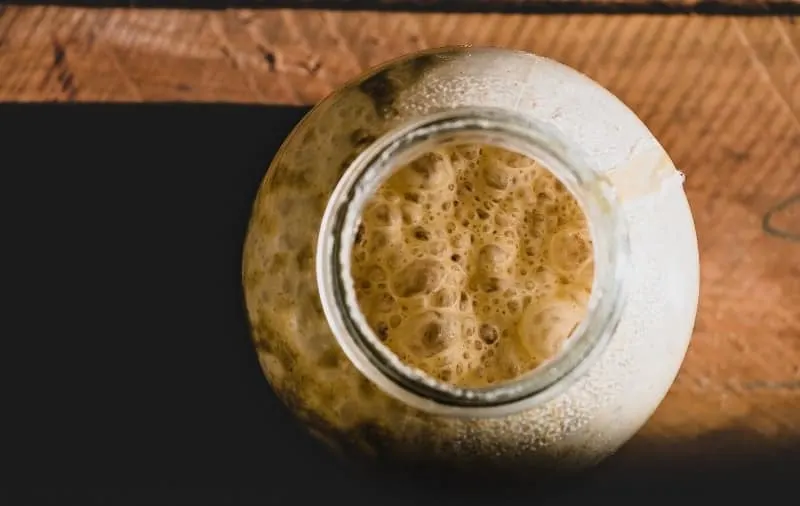It can be worrying when you go to feed your sourdough starter and see that it has a layer of a strange liquid on top.
We want our starters to behave predictably and consistently so we know what to expect, but this isn’t always the case, especially when someone is making their first one.
There are lots of problems and difficulties that people face when making sourdough bread, so it can get very annoying if you’re having issues with your starter too.
The liquid on your starter is alcohol that’s been produced during the fermentation process of the natural yeasts in the flour. It’s commonly called ‘Hooch’ and appears when your start gets hungry. It’s nothing to worry about as it just means that you need to feed it. Make sure to give it 3-4 feedings before use.
There’s no need for concern if your starter is producing hooch. This is just something that happens during the fermentation process and it’s very easily fixed.
If your starter is consistently developing hooch even with daily feedings, it might be that you’re not feeding it frequently enough. Try feeding the starter every 10-12 hours if possible or change the type of flour you’re using and see how it goes from there.
Hooch is likely to appear within the first few days of a new starter’s life but should be a rare occurrence as it ages and gets fed more consistently.
When And Why Is Hooch Produced?
Hooch isn’t a big problem, but it’s a good idea to know when and why it’s produced. Once you know this, you’ll be able to feed it consistently and understand how you can prevent it from happening again.
A noticeable amount of hooch is generally produced when the starter has exhausted its food supplies and needs feeding again.
There’s commonly a layer of hooch on top of a starter if it has been left unfed at room temperature for a few days or has been forgotten about in the fridge for a few weeks or months.
The amount of hooch that’s produced on a starter is different for everyone.
Some people notice that their starter produces hooch within a few days and some don’t get hooch at all.
The amount of hooch you get will most likely be affected by the flour you’re using, the hydration of your starter, the temperature of your room, and the age of your starter.
How Can I Prevent Hooch Build-Up?
Here’s a very simple one to answer.
All you need to do to prevent hooch is simply stick to a consistent feeding schedule. If your day allows for it, make sure to feed your starter at least once a day, but twice is best.
I know it sounds like a lot of work, but it’s only 5-10 minutes per day and requires very little effort to do.
If you really can’t feed your starter every day, you can leave it in the fridge for a while. All you have to do is feed it, allow it to rise at room temperature for a few hours, and leave it in your fridge until you’re ready to use it again.
This isn’t ideal, but it’s something you’re going to have to do if you want to avoid that unpleasant hooch.
Should I Stir The Hooch Back In Or Pour It Out?
Hooch is the natural by-product of the wild yeast during the fermentation process and isn’t anything to be worried about, but it’s difficult to know whether you should throw it away or just stir it back in.
Some people say to stir it back in whilst others recommend pouring it out. The truth is, there’s no right or wrong answer. If you want to pour it out, you can, but it won’t make much of a difference.
That alcohol layer isn’t harmful at all, so your starter will be perfectly happy with or without it. If you don’t like the idea of it being in your starter and want to throw it out, that’s fine, just pour it away and remember to feed your starter more often.
The only negative consequence of throwing it out is the fact that it throws off the hydration level of the starter slightly.
In my experience with hooch, I’ve just stirred it back in and there’s been no change to my overall starter, so it doesn’t matter what you do.

